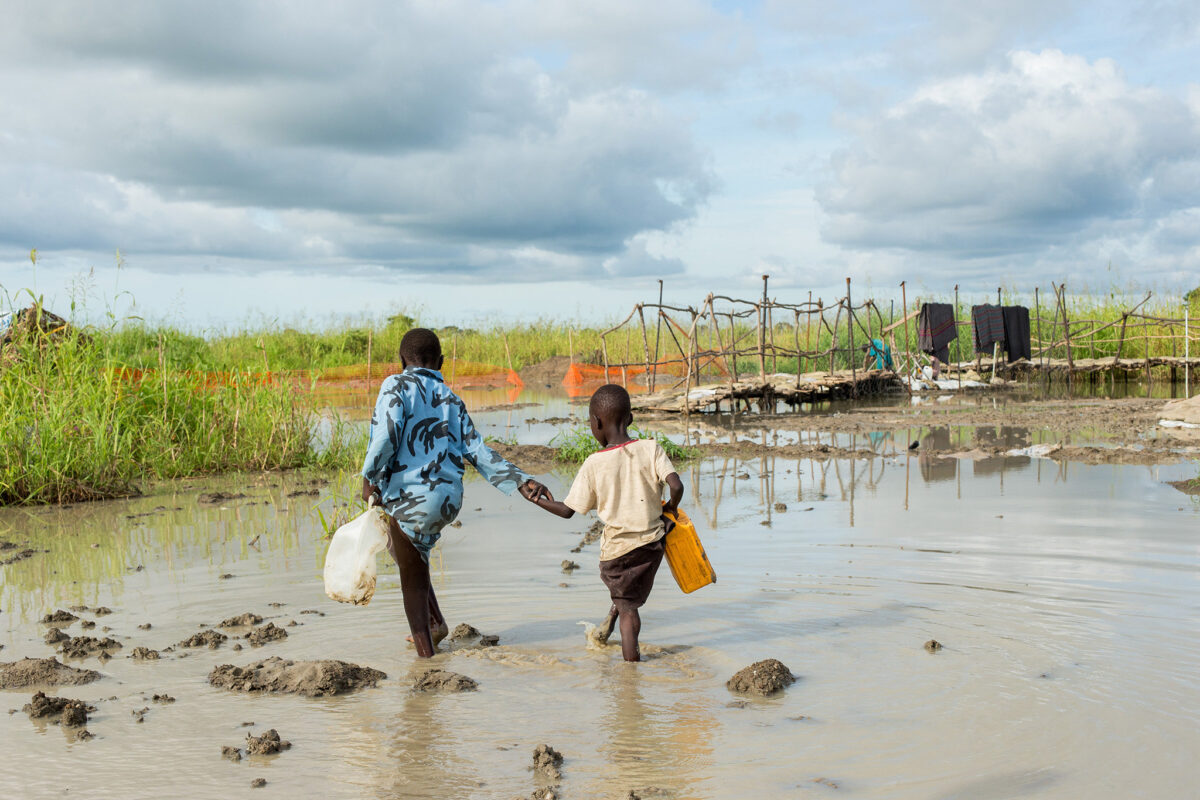
The WWA team has used observational data and climate models to demonstrate that the probability and intensity of extreme precipitation in these regions have increased, and these events are no longer rare.
“Due to high temperatures, the probability of such extreme precipitation has doubled, with an increase in intensity of around 10%. This means that even rainfall once considered normal can now cause catastrophic effects,” Izidine Pinto, researcher at the Royal Netherlands Meteorological Institute and lead author of WWA research published in October, told Mongabay in an interview.
The study, which focuses on Sudan, is an example of an “extreme event attribution,” in which scientists determine the degree to which weather events are influenced by climate change. This report follows on the heels of WWA research published in 2022 examining “nearly identical’’ flooding conditions in the wider region that year.
WWA researchers note that socioeconomic and political factors in the region intensify the situation. While climate change had a distinct role in the flooding, “The devastating impacts were further exacerbated by the proximity of human settlements, infrastructure (homes, buildings, bridges), and agricultural land to flood plains, underlying vulnerabilities driven by high poverty rates and socioeconomic factors (e.g. gender, age, income, and education), and ongoing political and economic instability,” according to the 2022 WWA assessment.
On Sept. 13, 2024, Paul Atanga Nji, Cameroon’s minister of territorial administration, visited the victims of the deadly floods that claimed some 40 lives in the Far North Region of the country. He stressed the impact of global climatic upheavals combined with rapid, unplanned urbanization in several areas. He referred in particular to the occupation of ecologically fragile areas, such as flood zones, which amplifies the risk of flooding.
In addition to the Far North of Cameroon, the WWA research highlights that the Sahelian regions of Sudan, Niger, Nigeria and Chad, already affected by armed conflicts, poverty and inadequate water management, are particularly vulnerable. Aging infrastructure and the absence of early warning systems exacerbate the situation. “We are going through an extremely difficult period due to torrential rains and severe flooding. These disasters, although natural, have caused major human and material losses. The government is by your side for relocation, medical care and any other assistance you may need. We are doing our utmost to provide you with the support you need at this difficult time,” Aissa Laouan Wandarama, Niger’s Minister of Humanitarian Action and Disaster Management, stated in a press release issued Sept. 3, 2024, in which she outlined the serious impact of the deadly floods in Niger. In particular, she deplored the loss of more than 273 lives and the 710,000 people affected.

According to the U.N.’s Office for the Coordination of Humanitarian Affairs, the consequences of flooding in Cameroon’s Far North Region have continued to intensify over the years. In 2024, torrential rains caused massive damage, destroying more than 18,000 homes and flooding tens of thousands of hectares of crops. Some 236,000 people have been affected, with an increased risk of epidemics due to the continuous rise in water levels. These figures are higher than the numbers of people affected and homes destroyed, as reported after the floods in 2022. Such rise in climatic catastrophes is predicted to be relatively intense in the coming years. “Climate change is leading to more frequent and intense rainfall events,” Pinto said, and even “relatively common rainfall events can now have devastating impacts due to existing vulnerabilities.”
In an interview, Lionel Djibie Kaptchouang, climatologist and head of the Environmental Management Department at the Consortium for Nature, the Environment and Sustainable Development in Cameroon, pointed out several factors that aggravate these phenomena: “Climate change favors intense rainfalls over short periods, leading to catastrophic flooding. In addition, the relief of the plains and valleys, combined with the impermeable clay soils, accentuates the accumulation of water. In human terms, the lack of adequate urban planning and effective sanitation systems worsen the situation.”
Cameroonian cities suffer a lack of modern sewage systems. Gutters, often clogged or poorly maintained, are insufficient to evacuate water from heavy rains. In addition, the urban development plans of many cities are obsolete and do not take into account international standards such as the Sendai Framework for Disaster Risk Reduction, an agreement adopted in March 2015 whose goal is to prevent new and reduce existing disaster risk.
The situation in Cameroon reflects what WWA researchers have found: Existing vulnerabilities combine to further expose communities to extreme floods. “Given that these events are not rare today, this means they will be common occurrences, and the region needs to prepare for much heavier events than those observed in 2024,’’ according to WWA.

The government of Cameroon seems to be fully aware of these potential issues — and potential solutions. Nji made clear in an address at the National Assembly on Nov. 15 that not only the floods, but also deadly landslides recorded in Cameroon aggravate existing vulnerabilities. He insisted on the urgent need to implement adaptation strategies to reduce the impact of these natural disasters that are increasingly affecting the country, particularly vulnerable regions such as the Far North.
The minister stressed the need for concerted action to integrate climate challenges into urban development policies. He also emphasized on the need to strengthen disaster anticipation and prevention mechanisms through better planning and sustainable development of vulnerable areas, in line with national climate objectives.
